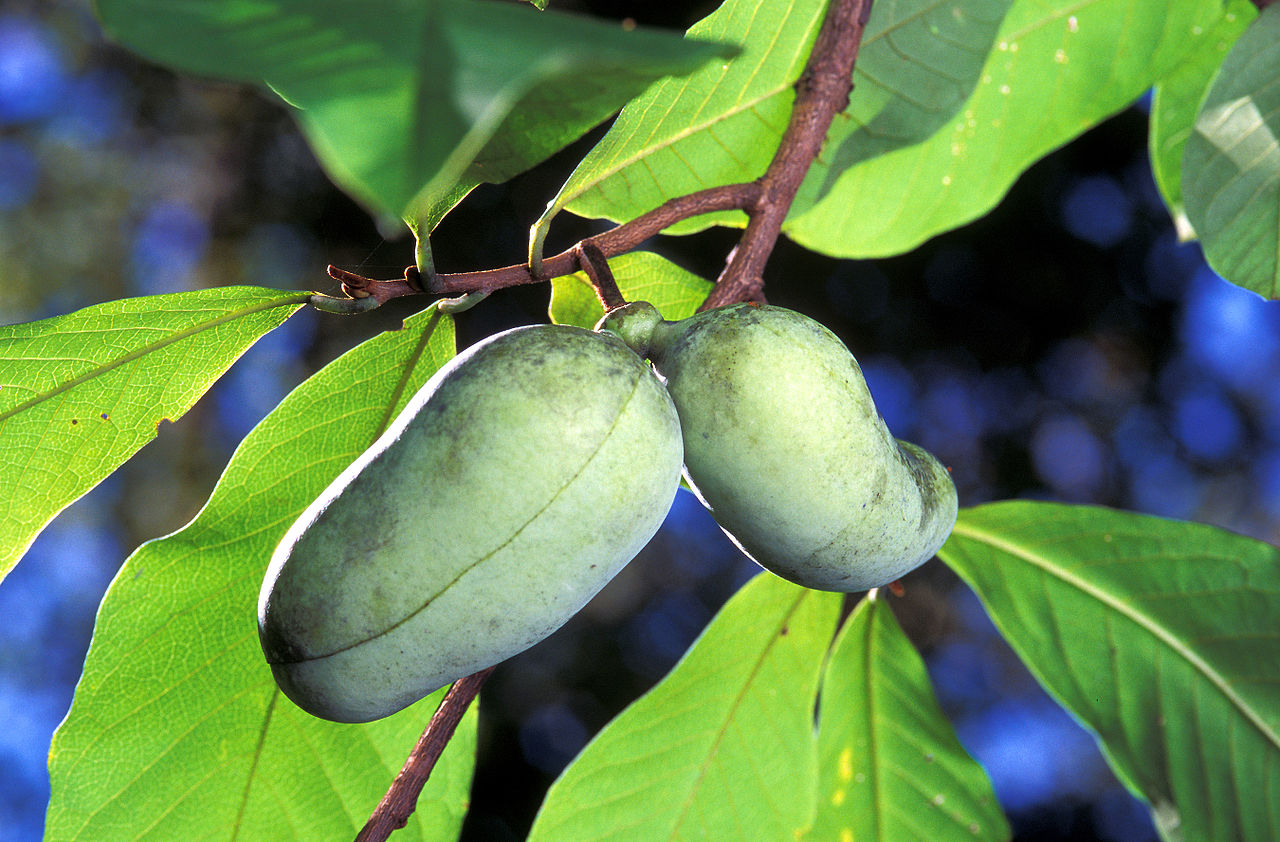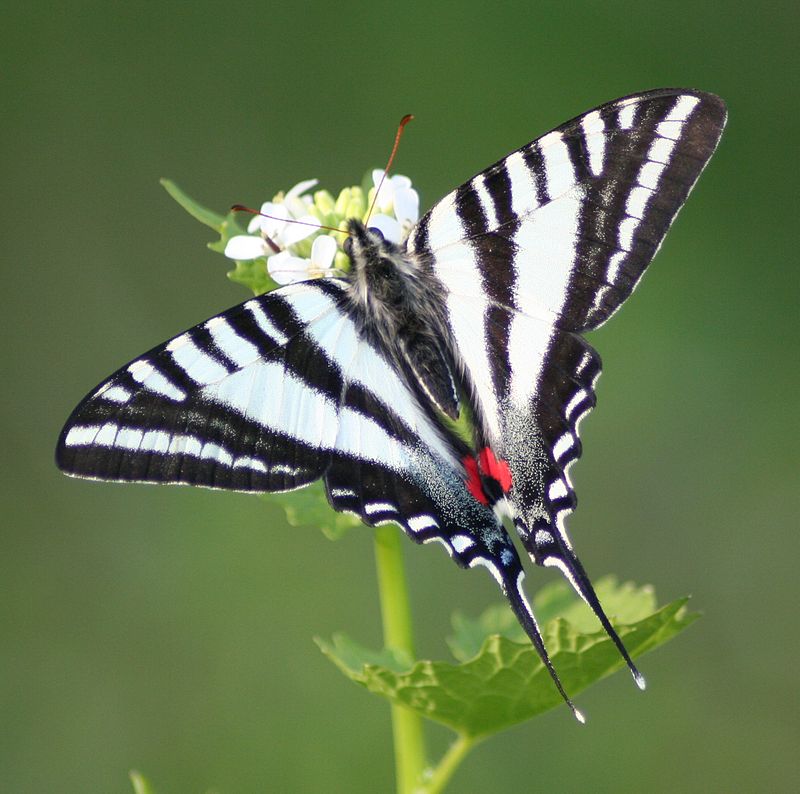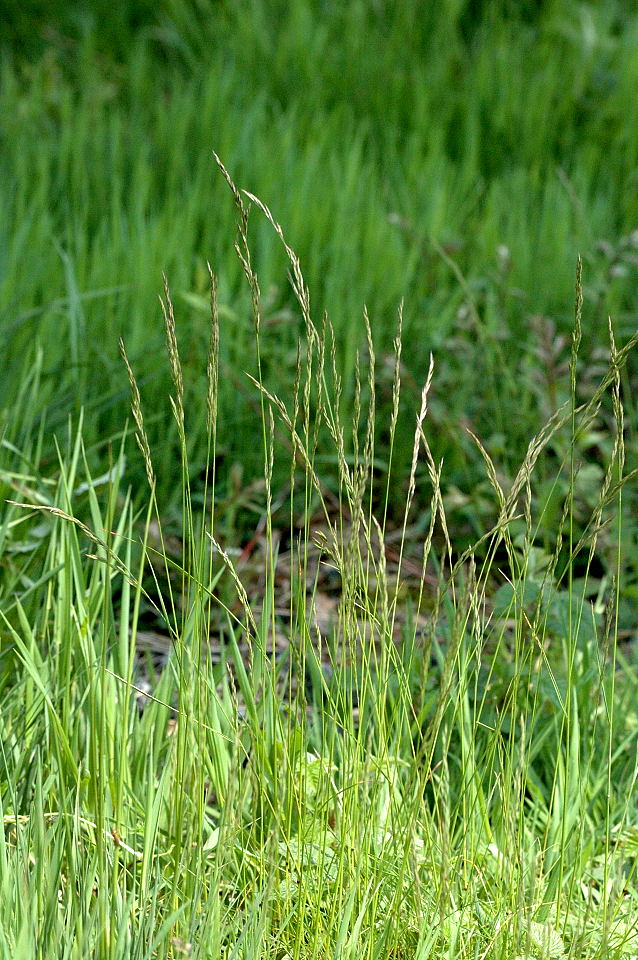Native plants are good news for gardeners. They're usually free...the best ones for your garden are probably already there, and need only a little arranging and encouraging. If they're not free, they're cheap. Neighbors may offer them to you when they thin flower beds or clear space for vegetables.
Native plants are also low-maintenance. In fact, some of them may seem like weeds in the vegetable garden. In their proper places, of course, they're valuable.
The Virginia Department of Conservation has prepared a list of plant species that are considered native and recommended for public garden spaces. The list is extensive. The question was how to pick only five plants. I was tempted to pick five trees! Instead, here's a list, now enhanced with pictures, of only one of each of five types of garden plants: shade tree, fruit tree, grass, flower, and cash crop.
Shade Tree: Red and Sugar Maple (Acer rubrum, A. saccharum)
| Few people think of maples as flowering trees, yet their flowers provide some of the first color of early spring. (Photo donated BY-SA 3.0, https://commons.wikimedia.org/w/index.php?curid=508152 ) |
America's favorite shade tree family includes more than a half-dozen species that grow well in Virginia. Red and sugar maples are officially classified as our native species.
What Vermont maple growers don't want the rest of the country to know is that all maple trees produce sugar. The official Sugar Maple is native to the Blue Ridge Mountains, but red maples, black maples, and politically incorrect Norway maples can be tapped too. Sap rises earlier in Virginia than in Vermont...sometimes one gets a good flow of maple sap during the January thaw, or, if not then, in the February thaw.
An interesting detail Noel Perrin mentioned in his Person Rural book series is that the definition of what makes the "best" maple syrup has changed over the years. In the past, when maple syrup and sugar were used as cheaper substitutes for cane sugar, the best grade of maple syrup was considered to be the kind that tasted most like white cane sugar. Today many people actually prefer maple syrup with a more distinct flavor, and red or Norway maples are likely to provide more distinctive flavors. (I speak from experience. My family used to tap maple trees in our wood lot and boil down sap to make our own maple syrup.)
book series is that the definition of what makes the "best" maple syrup has changed over the years. In the past, when maple syrup and sugar were used as cheaper substitutes for cane sugar, the best grade of maple syrup was considered to be the kind that tasted most like white cane sugar. Today many people actually prefer maple syrup with a more distinct flavor, and red or Norway maples are likely to provide more distinctive flavors. (I speak from experience. My family used to tap maple trees in our wood lot and boil down sap to make our own maple syrup.)
Fruit Tree: Pawpaw (Asimina triloba)
 |
| In September, looking up through the leaves on a mature tree, you see the edible pawpaw fruit. (Picture donated By Scott Bauer, USDA - USDA ARS Image Number K7575-8, Public Domain, https://commons.wikimedia.org/w/index.php?curid=10830 .) |
This interesting, tropical-looking little tree has dark, unexciting blossoms, but it attracts a really exquisite "flying flower." Pawpaw trees exist in a symbiotic relationship with the Zebra Swallowtail butterfly. The small, unobtrusive caterpillars (you almost never see one) have no other food plant, but nature keeps their population in check so they never affect the pawpaw population. The leaves are mildly toxic to most insects other than Zebra Swallowtails, and make Zebra Swallowtails mildly toxic to predators.
The butterfly is unique in North America, with black and greenish-white wings, long tails, and bright red "false eye spots." A fun fact about the Zebra Swallowtail is that butterflies develop wings of different sizes and colors depending on the temperatures while they were pupating. There is usually more than one brood per year, and butterflies that emerge late in summer are larger, with wider black stripes and brighter green stripes, than those that emerge in early spring.
 |
| In Virginia this would be one of the bigger, darker specimens; the ones I see in spring are almost white. In Florida some can be described as black butterflies with light green stripes; the disparities are big enough that the different size/color types used to be classified as different species. (Photo donated By Megan McCarty - Own work, CC BY 3.0, https://commons.wikimedia.org/w/index.php?curid=5279919 .) |
Grass: Fescue (Festuca rubra)
Fescue grows taller than Bermuda grass and may require more mowing if you insist on having a "lawn," but it needs no fertilizers or other chemical help, and makes a nice pasture for grazing animals. (If you want a smaller, lower-growing ground cover, the state web site provides an extensive list...clover, lespedeza, gama grass, and various other grasses.)
 |
| There are dozens of species of fescue, some considered invasive nuisances in places where they're not native. "Red" fescue belongs in Virginia and has appealing purple-tinged seeds if allowed to go to seed. (Photo donated By James Lindsey at Ecology of Commanster, CC BY-SA 3.0, https://commons.wikimedia.org/w/index.php?curid=1721573 .) |
Flower: Phlox (Phlox, several species)
A good all-around flower, phlox is small enough that blossoms can be harvested for a table centerpiece, yet not too small to look decorative from the street or sidewalk. If you don't already have it, it's easy to get. Once you have it, it's easy to maintain.
 |
| Phlox blooms can be white, pink, blue, or any shade in among those. Many are smaller and bunchier than the ones photographed here, which appeal to me because they resemble my vincas. Phlox are smaller than vincas. Both are good ground cover. (Photo donated CC BY-SA 3.0, https://commons.wikimedia.org/w/index.php?curid=192105 .) |
Cash Crop: Blueberries (Vaccinium, four species, and Gaylussacia, two species)
Blueberries and huckleberries are basically the same thing, but some people prefer to call Vaccinium blueberries and Gaylussacia huckleberries. (The tiny seeds you don't notice when eating the berries grow in different patterns, which is enough to qualify them as different genera.) Cultivation and growing conditions are what make the difference in the size, sweetness, and tartness of the berries. The bushes thrive in acid soil, which should come as a relief to those who have been applying lime or ashes to their vegetable gardens to counteract the high acidity of Southwestern Virginia soil...just make sure to plant the berries away from the vegetables! While the mechanically picked blueberries sold in supermarkets may be too sour or too bland to suit some people, those who pick their own blueberries soon learn how to pick the precise balance of sweet and tangy they prefer.
 |
| In Virginia, blueberries grow like weeds wherever humans stop tinkering with the chemistry of thin acidic soil. If you cut back any vines trying to grow up the bushes, and scare off the deer who want to eat all the new growth each year, you will have berries to eat, repay favors, and sell for petty cash every summer. Those little pale pinkish berries are immature; if left on the plant they'll eventually ripen. (Photo donated By Caleb Slemmons - forestryimages.org, CC BY 3.0, https://commons.wikimedia.org/w/index.php?curid=29977718 .) |
SOURCE (AC used to have a text box for source links. This is the same link embedded above, spelled out for pasting into browsers...)
And, for those who want to try a more exotic and difficult native plant, today's Amazon link is the official guide to the Native Orchids of the Southern Appalachian Mountains. One of the most distinctive plants (though it doesn't have the showiest flowers) will grow wild near the Cat Sanctuary if it gets enough shade.
 |
| Stanley Bentley is credited with the scientific "discovery" of the wild orchid species Corallorhiza bentleyi, whose flowers are even less showy than those of either species of Goodyera, shown below. |
 |
| Goodyera won't tolerate this much sunshine for many hours! For most of the year all you see are the distinctively streaked leaves that suggest a relationship to plantain, but some plants, some years, will send up a long spike of small yellow or white flowers. The plant is, technically, in the orchid family. (Photo donated By Cdc25A - Own work, CC BY-SA 3.0, https://commons.wikimedia.org/w/index.php?curid=16158242) |
No comments:
Post a Comment